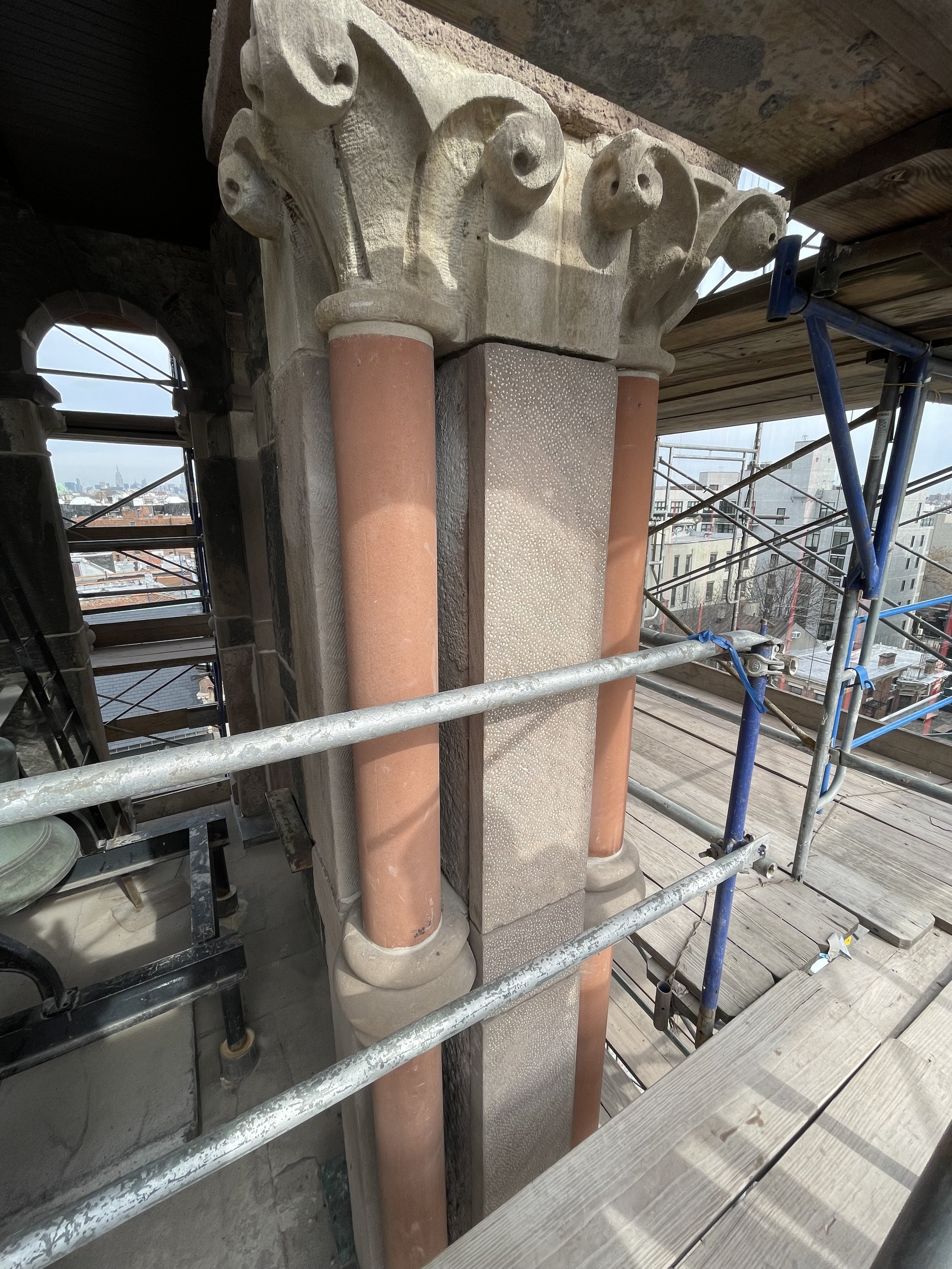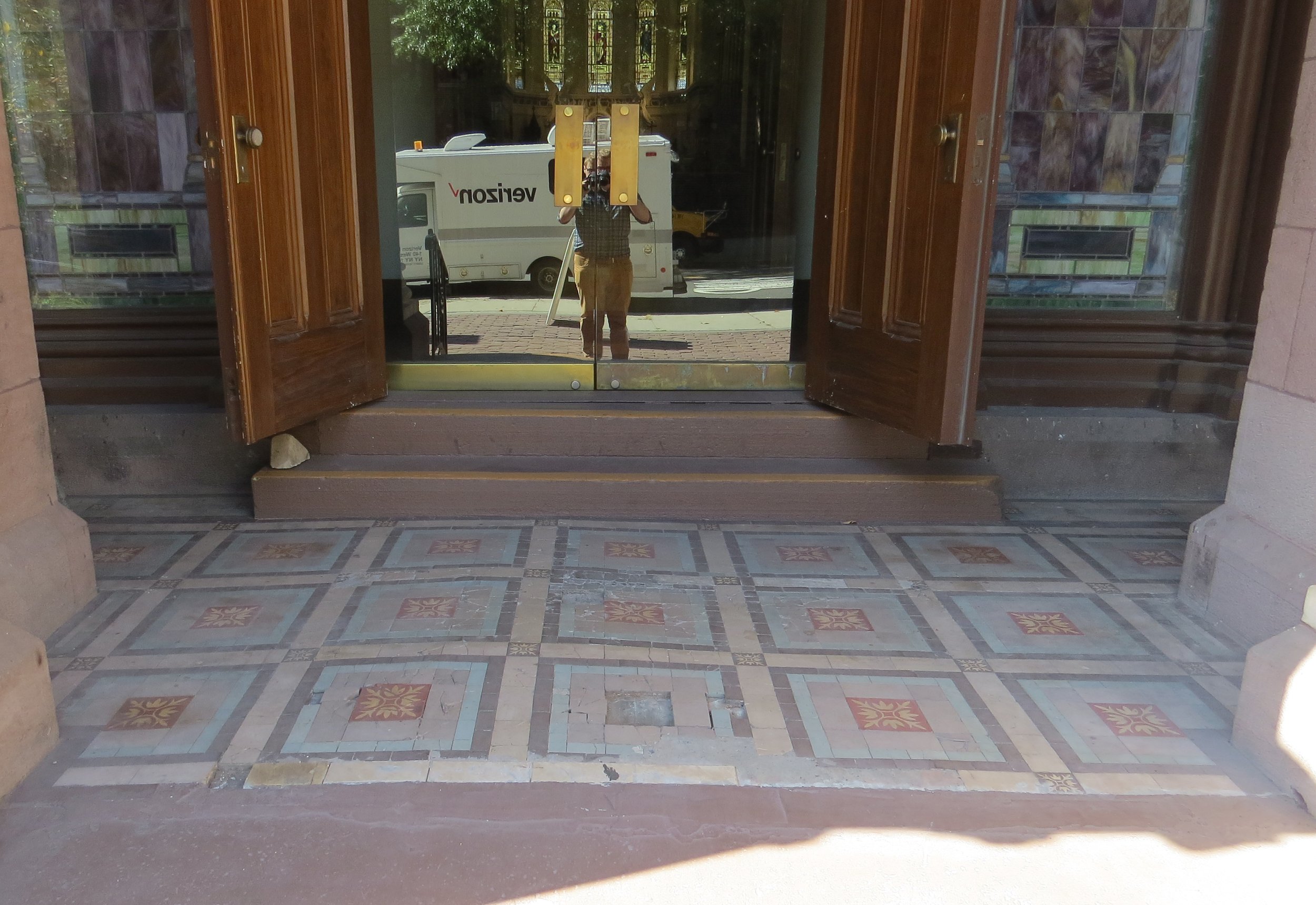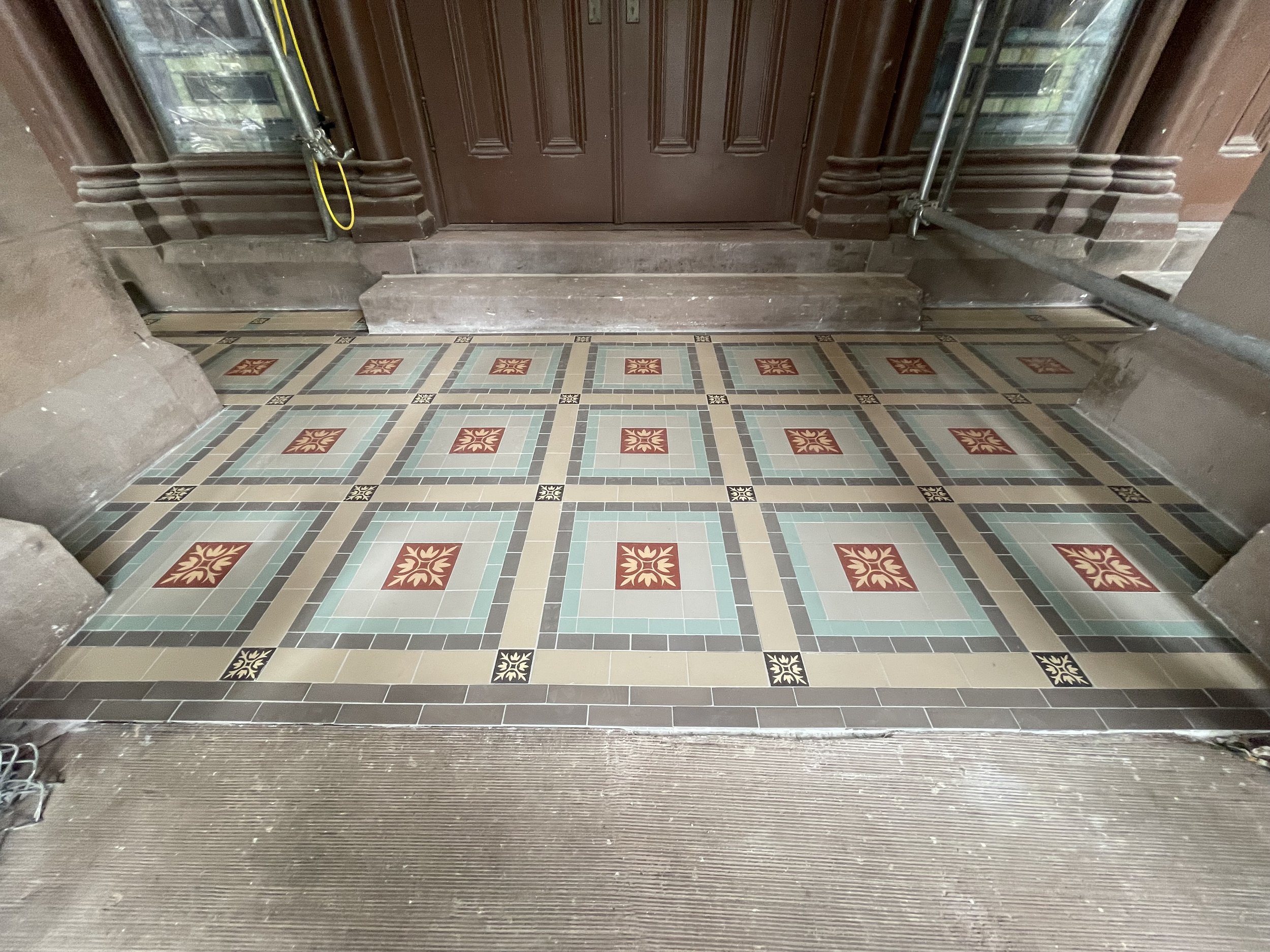Excellence Award Spotlight: Church of St. Luke & St. Matthew Exterior Restoration
“We are very grateful to receive this award from the Preservation League of New York State in recognition of an exceptional team effort to initiate this project and bring it to completion,” said Rev. Andrew Durbidge, Rector of St Luke & St Matthew. “This parish church has existed on this site since 1841. The building represents the hard work and faithful contributions of many parishioners over these many years. It is a magnificent building and a tribute to past parishioners’ faithfulness in God. We carry on their legacy in caring for this landmark in Clinton Hill, to benefit future parishioners and the local community.”
Designed in the Italian Romanesque Revival style by the Brooklyn architect John Welch and constructed between 1888 and 1891, the Church of St. Luke & St. Matthew is a polychromatic masterpiece employing seven unique stone types on its monumental primary façade. In 2017, after two fires (one in 1914 and a second in 2012) and more than a century’s exposure to the elements, the Church parish embarked on a restoration project with Li/Saltzman Architects.
The carefully planned and executed restoration program took approximately five years. The entire façade was cleaned and sounded before removing deteriorated stone back to stable substrate. Of the multiple stone types, the brownstone was found to be in the most deteriorated condition, with many units losing up to one-half of their total depth. In the end, approximately 466 brownstone units required partial or full unit replacement. The replacement of the brownstone units was a significant undertaking which required the measurement of each individual replacement unit, laser scanning, the creation of full-size templates, and the preparation of anchorage and shoring shop drawings. While the brownstone restoration resulted in the most unique set of challenges, the overall scope of restorative work was extensive and intended to re-establish the Church as a physical beacon in the Clinton Hill neighborhood of Brooklyn. Other notable aspects of the restoration included the cleaning and removal of surface delamination of yellow stained bluestone; the replacement of 59 highly deteriorated red brownstone colonette shafts with cast stone units; the replacement of broken and missing encaustic tile flooring with new units fabricated in England using the same historic process as the originals; restoration of damaged stained glass windows and the installation of new clear glass vented protective glazing; removal of a non-matching red asphalt shingle roof at the Belfry and replacement with new grey slate shingles matching the historic; and the replacement of a non-historic sheet metal cross at the Belfry with a new copper cross recalling the historic design and proportions.
Before and after images, from left: brownstone colonettes; encaustic tile flooring in the entryway; stained glass window.
This restoration project was a major undertaking for the small congregation. Luckily, New York City's 74-711 Special Permit process made the project possible. This unique preservation tool allows the modification of bulk and use regulations at development sites in exchange for funding a "Preservation Purpose" such as an exterior restoration of a landmarked building. For projects taking advantage of a 74-711 Special Permit the New York City Landmarks Preservation Commission (LPC) mandates a restoration program that will bring the building into a first class, sound condition with a continuing maintenance program. Without access to the financial resources afforded by this unique land use process, St. Luke and St. Matthew could never have funded a restoration of the quality, scale, and complexity required to return this historic resource to its former architectural glory. Municipalities where land use laws take historic preservation into account, such as New York City’s 74-711 Special Permit process, show how preservation and development can work in tandem to revitalize communities and promote long-term stewardship of irreplaceable historic assets.
Crew members install the new cross on the church roof.
“The restoration work done on the exterior of the Church of St. Luke & St. Matthew is truly excellent,” said Preservation League President Jay DiLorenzo. “We commend everyone involved in returning this building back to its former glory and prioritizing its preservation for future generations.”
The exterior restoration of the Church of St. Luke & St. Matthew was funded by the parish and Hope Street Capital.
Project team: The Church of St. Luke & St. Matthew, an Episcopal Church in the Diocese of Long Island, owner; Li/Saltzman Architects, Preservation Architect; Gilsanz Murray Steficek, Structural Engineers; Skyline Restoration, Restoration Contractor; and Femenella & Associates, Stained Glass Restoration; Hope Street Capital, Developer
Since 1984, the League's annual Excellence Awards program has allowed us to shine a light on the people who are using historic preservation to make all our lives better —through exemplary restoration projects, indispensable publications, individual action, and organizational distinction.
For more about all of this year’s winners, please click here.







